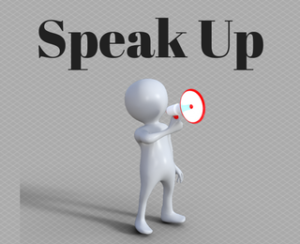 You have been asked to introduce the keynote speaker at a major industry conference. You’re honored by the opportunity, but also daunted by the person’s lengthy resume full of important achievements. How can you pull together an introduction that does justice to the speaker’s qualifications while also not putting the audience to sleep?
You have been asked to introduce the keynote speaker at a major industry conference. You’re honored by the opportunity, but also daunted by the person’s lengthy resume full of important achievements. How can you pull together an introduction that does justice to the speaker’s qualifications while also not putting the audience to sleep?
An Introduction Sets the Stage
Before starting to write the introduction, think back to a time when you were in the audience awaiting a keynote speech. Which introductions captured your attention and caused you to sit up in your chair in anticipation of the speech? Which introductions were so dull that you started looking at the conference program to see what sessions were being offered later that day?
Needless to say, you want your introduction to be more like the former than the latter. To do so, keep the introduction short. For example, Toastmasters International recommends that the introduction take about a minute to complete. Therefore, it’s important to talk to the conference organizer as soon as possible to determine exactly how long the introduction should be. It is also important to get an understanding of what highlights the speaker feels are most important to include in an introduction. Many speakers have a short intro that they use specifically for this purpose.
Focus on Building Anticipation
If the speaker you are introducing does not already have a short bio, the next step is writing the introduction. When crafting your comments, remember that the purpose of an introduction is to build anticipation for the keynote speech. Great introductions don’t include a blow-by-blow reading of the speaker’s resume. Instead, a great introduction usually starts with some sort of attention-grabbing comment, such as a quote or a quick story related to the keynote speaker. The introduction then offers a few major resume highlights to underscore the speaker’s expertise. Your introduction also shouldn’t take away from the speaker’s key messages.
Finally, practice the introduction several times. Reciting the introduction allows you to become comfortable with the wording and identify any areas that need revisions.
When writing an introduction, remember that you’re verbally placing the conference spotlight on the keynote speaker. You’ll know that you’ve done a good job when the audience remembers the keynote speaker instead of you at the end of the session.
Recent Posts
Speaking engagements are a great way to serve more people and expand your business. Virtual speaking engagements are one of the fastest ways to connect with many people, without the …
Read More
As a speaker, the information you share is only as good as the effectiveness with which you share it. Your ability to delivery a dynamic keynote speech starts with your …
Read More
The world continues to feel smaller with more people sharing news, information and opinions. With so many sources of information and content related to the challenges and opportunities evolving each …
Read More






